Eccentric VIC
In November 1981, Commodore finished development of the VIC-II video chip and the SID sound chip. They then started development
on the first machine the chips were used in, the VIC-10 (eventually changed to MAX Machine and Ultimax in the US). It was
released in Japan early 1982, only to get cancelled shortly thereafter.
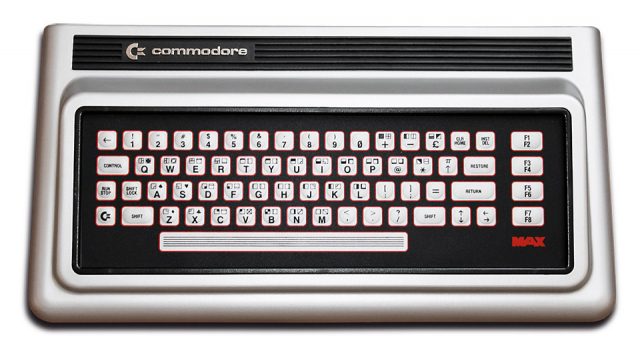
Honorific VIC
Simultaneously with the VIC-10, in November 1981, Commodore announced the VIC-40 prototype, which used a video chip called the
6562. The 6562 was identical to the VIC except it displayed 40-column text rather than 22, which made for a great "expansion" of
the VIC-20's life. Replacing the VIC with the 6562 would've been easy apart from slightly altering the KERNAL which was coded to
treat the machine as 22-column. In addition, for VIC-20 owners, they announced upgrade kits to be released in April 1982 and
brand-new computers with the 6562 chip slated to come out later that year.
VIC-20 architect Robert Russell and SID engineer Bob Yannes told Commodore CEO Jack Tramiel that an affordable successor should
be created. So Tramiel suggested it have 64 KB of RAM because DRAM chip prices were dropping dramatically. This new computer
could be developed fast because Commodore had their own semiconductor factory to make chips (MOS Technology). Its codename was
the VIC-30, since it is the successor to the VIC-20. And rightly so, because some of the new computer's architecture is similar.
The BASIC 2.0, size of the motherboard, key and keyboard design, and main case are all similar to the predecessor.
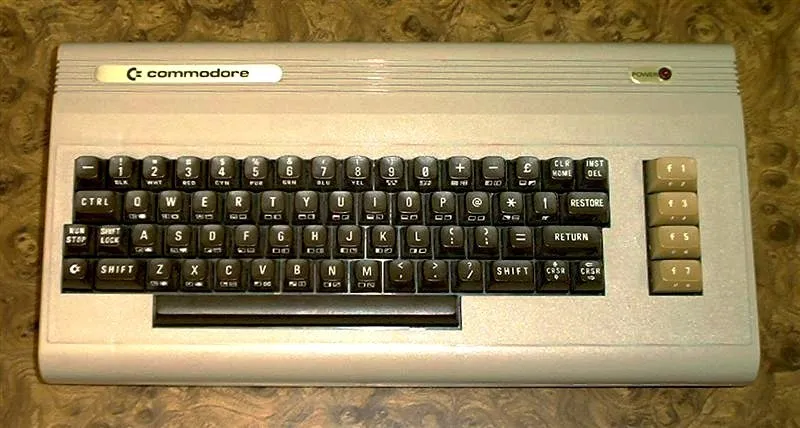
This prototype of the 64 has very few differences from the final. The bottom of the casing has a sticker that indicates it's the
19th manufactured unit! On top is a gold badge that reads "Commodore". What's interesting is the "power" label also being gold
like the VIC-20. They may have just taken a casing from a VIC-20 and used it for this prototype.
The Commodore 64 would go on to be the best selling individual model computer of all time, at around 17 million units, a
record that stands to this very day.
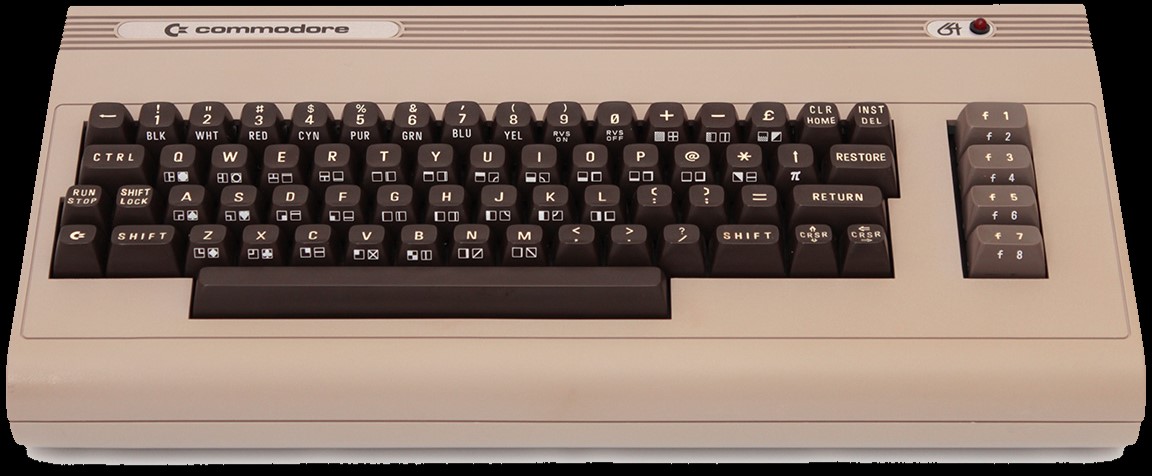
At initial release, the badge was silver, along with the power light label which has the very early "64" logo design found on ads
and early manuals for the computer.
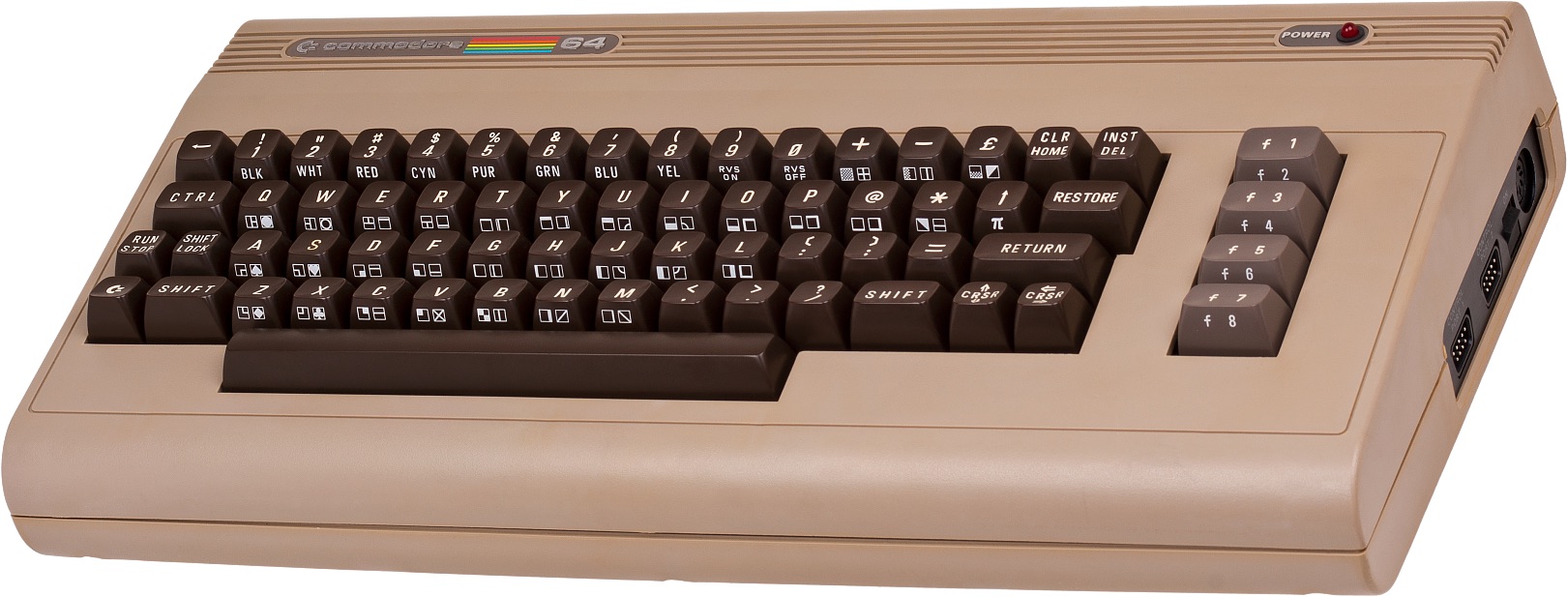
As the VIC-20 had, the 64 eventually shifted to a badge with colorful lines between "commodore" and "64".
The portable Commodore SX-64 was initially announced with the name SX-100. It came with a choice between having one or two 5 1/4"
1541 floppy drives built-in and a choice between a 5" monochrome or full-color monitor. The SX-100 was slated for release
sometime in Summer 1983, but then some changes were made to how the computer was marketed.
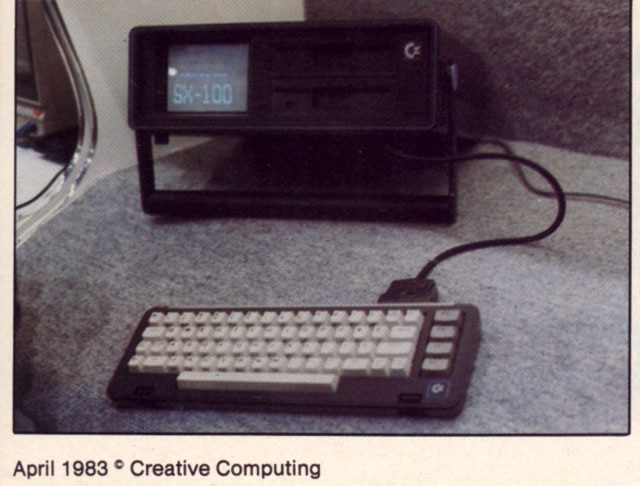
Instead of a customizable computer, it came in three different variants: One with an 80-column monochrome screen and one floppy
drive, one with a monochrome screen and two disk drives (making it a clone of the CP/M-run Osborne from 1981), and one with a
full-color screen and two drives. But at Summer CES 1983, another marketing change occurred. This time, the monochrome-model was
done away with entirely, leaving the new machine to have a color monitor with the option of one or two floppy drives, renamed the
Executive 64 with a release date pushed into the fall. But in the end, the machine was renamed to SX-64 and released in early
1984 with a price of under $1000. Although this computer wasn't a success, it was special, because it was the first full-color
portable computer in the industry. While its hardware and firmware were nearly identical to the Commodore 64, there were a few
differences like the lack of a cassette port. Commodore left it out, deeming it unnecessary.
Some time after the SX-64 was released, Commodore revisited a potential dual-drive model called the DX-64. But again, it was
cancelled when it was found the power needed to run both drives was insufficient. Consumers would have had the choice to install
a modem rather than have the extra floppy drive, as well. The SX-64 was discontinued in 1986.
Cargo 64
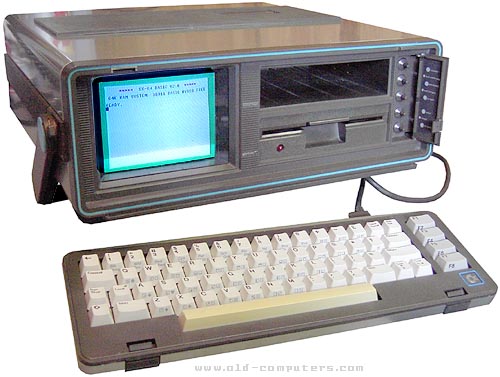
The final unit only sold with one floppy drive. In place of a second one, there was a space to store extra disks. The shiftlock
key says "lock" and has an LED with it, substituting the push in/out mechanism the VIC-20 and 64's shiftlock had. A cartridge
port was added on top.
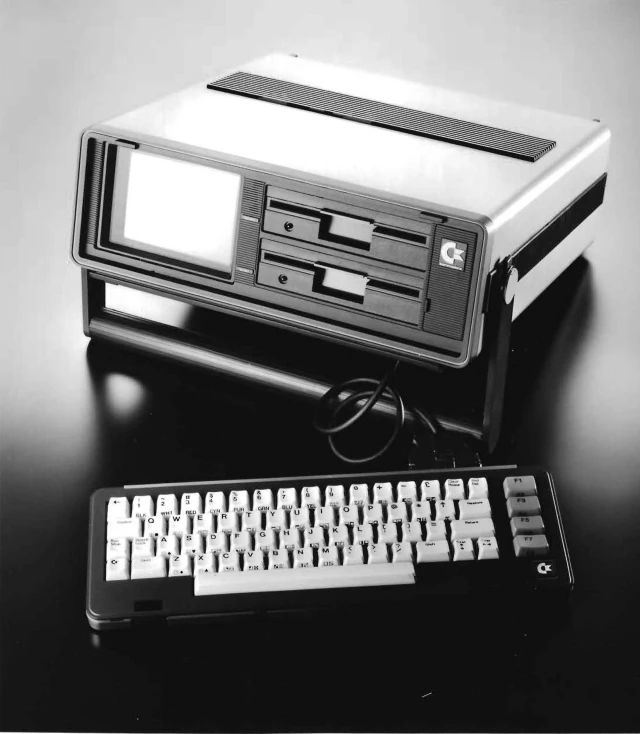
The prototyped "DX-64" with two disk drive interfaces. The shiftlock key originally said just that and had no light to indicate
whether it's activated.


 This prototype of the 64 has very few differences from the final. The bottom of the casing has a sticker that indicates it's the
19th manufactured unit! On top is a gold badge that reads "Commodore". What's interesting is the "power" label also being gold
like the VIC-20. They may have just taken a casing from a VIC-20 and used it for this prototype.
This prototype of the 64 has very few differences from the final. The bottom of the casing has a sticker that indicates it's the
19th manufactured unit! On top is a gold badge that reads "Commodore". What's interesting is the "power" label also being gold
like the VIC-20. They may have just taken a casing from a VIC-20 and used it for this prototype. At initial release, the badge was silver, along with the power light label which has the very early "64" logo design found on ads
and early manuals for the computer.
At initial release, the badge was silver, along with the power light label which has the very early "64" logo design found on ads
and early manuals for the computer. As the VIC-20 had, the 64 eventually shifted to a badge with colorful lines between "commodore" and "64".
As the VIC-20 had, the 64 eventually shifted to a badge with colorful lines between "commodore" and "64".

 The final unit only sold with one floppy drive. In place of a second one, there was a space to store extra disks. The shiftlock
key says "lock" and has an LED with it, substituting the push in/out mechanism the VIC-20 and 64's shiftlock had. A cartridge
port was added on top.
The final unit only sold with one floppy drive. In place of a second one, there was a space to store extra disks. The shiftlock
key says "lock" and has an LED with it, substituting the push in/out mechanism the VIC-20 and 64's shiftlock had. A cartridge
port was added on top. The prototyped "DX-64" with two disk drive interfaces. The shiftlock key originally said just that and had no light to indicate
whether it's activated.
The prototyped "DX-64" with two disk drive interfaces. The shiftlock key originally said just that and had no light to indicate
whether it's activated.